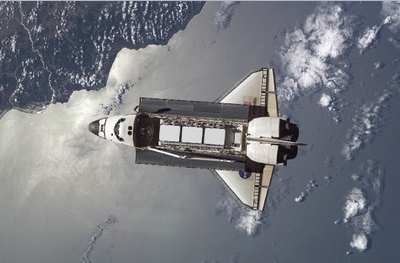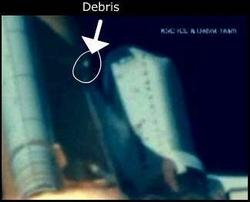Engineers Told To Be Ready For Change Orders
America will return to space with the shuttle program. If NASA
has its way, shuttles will be launching again by Fall.
NASA officials said Friday steps to improve shuttle safety will
not wait for the findings of the Columbia Accident Investigation
Board, which is trying to track down why the shuttle disintegrated
as it re-entered the atmosphere on Feb. 1.
NASA's spaceflight chief Bill Readdy disclosed Friday a memo
dated Wednesday, which outlines the steps shuttle program managers
need to take to get the fleet ready to fly as early as next
Fall.

What, No Pictures?
Readdy also talked with reporters on Friday about his role in a
decision to pass up opportunities for satellite imagery of the
shuttle during flight. Columbia was hit on its left wing by
insulation falling off the external fuel tank. Engineers assessed
possible damage and determined there was not a safety issue.
Contrary to reports in Friday's edition of the Washington Post,
Readdy said a request to try to obtain images of the shuttle's wing
with orbiting spy satellites was never made. A colleague had
discussed the issue with an agency capable of tasking the
satellites, such as the National Imagery and Mapping Agency, and
told Readdy the offer to image Columbia was on the table. NASA
would have to request the service on an emergency or high-priority
basis.
They Could Have, But They Didn't
 "My understanding was that the (space shuttle
program) was well aware of those capabilities ... and it had
concluded that the offer would not contribute to the analysis,"
Readdy (right) said, reading from a memo he sent two days
after the accident to the investigation board, Congress and the
agency's Inspector General.
"My understanding was that the (space shuttle
program) was well aware of those capabilities ... and it had
concluded that the offer would not contribute to the analysis,"
Readdy (right) said, reading from a memo he sent two days
after the accident to the investigation board, Congress and the
agency's Inspector General.
"The conclusion reached by the mission management team was that
there was no safety of flight issue and for those reasons there was
no rationale for requesting emergency or high-priority support,"
the memo said.
"If we had thought for a moment there was a problem, we would
have asked," Readdy added.
Readdy's memo stated he had no problem if the other agency
wanted to image Columbia on a "not-to-interfere" basis, meaning,
for example, the orbiter would not change its position to support
photography.
Changes Coming
 In light of the accident, the external tank
insulation is enough of a concern that NASA plans to change how the
foam is applied to the tank, Columbia investigation board chairman
Harold Gehman said earlier this week.
In light of the accident, the external tank
insulation is enough of a concern that NASA plans to change how the
foam is applied to the tank, Columbia investigation board chairman
Harold Gehman said earlier this week.
In his memo, Readdy told program managers to:
- conduct a thorough review of key space shuttle systems;
- develop concepts for on-orbit inspection and repair of
shuttle's thermal protection system;
- review policies for obtaining photographic and radar coverage
of the shuttle during critical flight phases; and
- review failure modes and effects, the shuttle's critical items
lists, waivers, hazards, and the process for identifying and
resolving in-flight safety-of-flight issues.
 ANN's Daily Aero-Linx (05.02.24)
ANN's Daily Aero-Linx (05.02.24) ANN's Daily Aero-Term (05.02.24): Touchdown Zone Lighting
ANN's Daily Aero-Term (05.02.24): Touchdown Zone Lighting Aero-News: Quote of the Day (05.02.24)
Aero-News: Quote of the Day (05.02.24) ANN FAQ: Contributing To Aero-TV
ANN FAQ: Contributing To Aero-TV NTSB Final Report: Cirrus Design Corp SR20
NTSB Final Report: Cirrus Design Corp SR20





